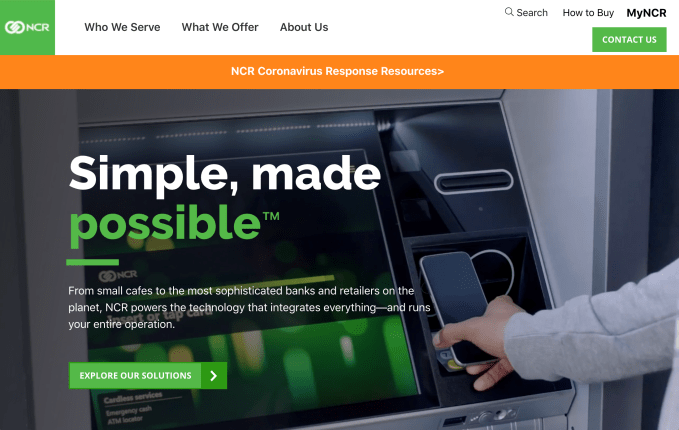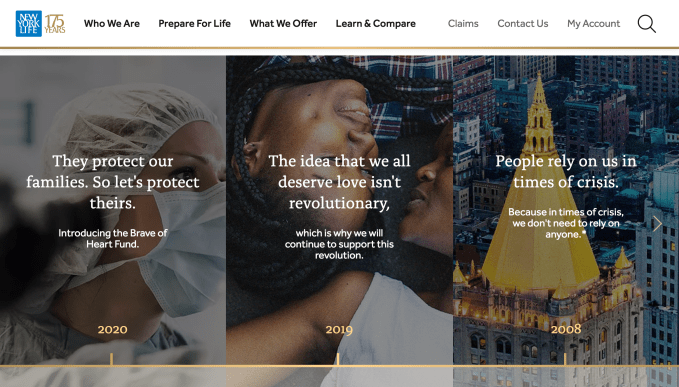The idea of having CMOs and CIOs work together is nothing new. It’s been around long enough, in fact, that many industry watchers have questioned the progress. In one instance, Forrester referred to it as a paradox: A seemingly obvious partnership, one that helps companies move faster and serve customers better, is not being leveraged to full potential. Had it not been for the forcing factor of a pandemic, the lack of progress may have persisted even longer.
In a few short months however, digital has reshaped daily life. Organizations are having to support a remote workforce, while students are adjusting to virtual classrooms. It is driving the economy as well, with consumers flocking online to engage and transact. Communications and technology have had to come together in new ways, and some brands were not prepared. Great marketing, without a close IT partnership, slows down any efforts to roll out new web experiences (both externally and internally), or leverage useful technologies such as AI and augmented reality.
Adobe teams have witnessed this unfold firsthand. Its enterprise business supports everything from eCommerce and web content management, to analytics and eSignatures. When the pandemic unfolded, customers were in need of guidance and support like never before.
What the company noticed as a common trait amongst the most successful digital businesses, was this tight collaboration between the CMO and CIO and their organizations. During the virtual Adobe Summit event earlier this year, CEO Shantanu Narayen called it the “decade of the CMO and the CIO,” placing a bet on this partnership being one of the most important trends in the next chapter of digital transformation.

Image Credits: Adobe blog
Bringing the CMO and CIO organizations together was inevitable; COVID-19 simply accelerated the urgency. In the past, when marketing teams had fewer channels to manage, gut instinct could be a successful strategy. The growth of websites and apps however, mixed with new ways of marketing through ads, email and more, made it so that marketers needed more sophisticated technology and better data. This meant collaborating with IT (responsible for procuring and managing technology), who suddenly had a major role to play in the customer experience.
IT and marketing leaders who began this journey together often found they were working with an incredibly antiquated technology infrastructure. But at least their expertise was complementary: CMOs brought a marketing and communications background with strong knowledge of the customer journey, while CIOs understood what it took to unite data and build underlying systems.
Take NCR Corporation, a company with over 34,000 employees, and supports businesses with point-of-sale systems, digital banking, payment processing, and more. In business for over 135 years, they were established to sell the first mechanical cash register. Around 2014, Bill VanCuren (CIO) and Marija Zivanovic-Smith (SVP of corporate marketing) began the effort to retool NCR’s marketing and IT infrastructure and better compete in the digital experience economy.

Image Credits: NCR.com
Early fruits of their labor can be seen in a revamped web experience, as well as a one-stop-shop Intranet for employees. The tapped Adobe Experience Cloud apps as a technology partner as well; According to Marija, “[The investment into Adobe solutions] has led our marketing team to achieve a new level of customer insight and better understand how different audiences connect with our brand stories.”
In the midst of a pandemic, the close partnership proved invaluable. Together, they shifted over 95 percent of the NCR workforce remote in just two weeks, while keeping field and operations employees safe. At the same time, they helped customers navigate a complex environment, from the paycheck protection program to cleaning point-of-scale devices. A resource hub was quickly delivered, which has since seen over 140,000 unique visitors and 188,000 page views.
“We would not be able to share this valuable content without Bill and his team’s support building out the infrastructure on NCR’s website, working with us to ensure it is up to date and making sure it is available to the public,” according to Marija. “Bill and his IT team are the infrastructure backbone of everything we do in marketing.”
Bill shares a similar sentiment, noting that “In IT we generally work in the background, keeping business applications and infrastructure operating as seamlessly as possible. Marketing helps us shift that narrative by highlighting the critical role IT plays internally. Working together, Marija and I can shine a light on IT and demonstrate the meaningful value it brings to our organization, while also helping marketing spread that message externally.”
We have also seen how New York Life Insurance Company (the largest mutual life insurance provider in the US) was able to address the pandemic through a close marketing and IT collaboration. This effort began years earlier, when CIO Dave Castellani made it his mandate to break down walls between IT and the rest of the organization. He moved the internal conversation away from technology needs, focusing instead on his colleague’s business problems.

One of these colleagues was Amy Hu, the company’s VP and co-head of marketing. When COVID-19 occurred, the two leaders focused on supporting the 12,000 financial professionals they served. In short order, they were able to digitize in-person work through the use of virtual seminar software.
“It’s been a really well-orchestrated process between technology and marketing teams and our financial professionals to make this all happen,” Amy shares. “We’ve been able to react to this in a matter of months because those relationships, the infrastructure, and the governance were already established.”
Collaboration with IT extended to the sales organization as well. When face-to-face interactions went on pause, sales leaders had to rethink engagement models and build relationships digitally. The company is now exploring ways for artificial intelligence to measure engagement, as well as augmented reality for creating new customer experiences. Dave was quick to assign a cross-functional taskforce across marketing, sales and IT to evaluate available technologies.
NCR and New York Life Insurance are great examples of progress in the CMO/CIO partnership. Unfortunately, examples like this are still in the minority. But as we have seen, COVID-19 is cementing new norms, creating new consumer demands and accelerating the urgency. Like other previous junctures, brands that make the right moves and deliver the most intuitive customer experiences will have the greatest staying power.
Dave Castellani sums it up nicely: “This is a moment in time where [organizations] have to totally rethink their process and strategy. Sales and marketing will be significantly challenged and tested in the post-COVID world. Adaptation — and, in some cases, wholesale changes — to the way companies operate may be required.